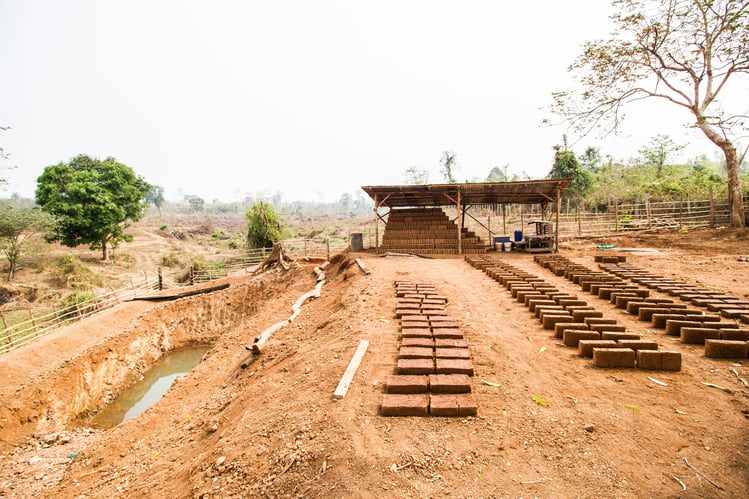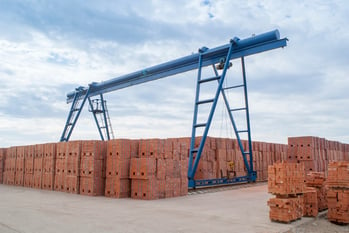Fired-clay brick has changed little since being introduced some 5,000 years ago, but the kilning process now uses 70% less energy than it did a half century ago. Brick was a “green product” long before the green building materials movement was branded and it is now greener than ever. Despite the advances, controversy now exists between the self-regulation of brick production and government intervention.
Brick offers fire- and impact-resistance, energy-efficiency and sound protection to structures around the world as a 100% recyclable product. To reduce transportation costs, brick-making plants are typically located near raw materials sources, thus reducing the carbon footprint.

Green Brick Types
- Kiln-fired clay — Clay or shale baked at 1,000° F
- Calcium silicate — Chemically set lime, sand and silicate followed by hardening in an autoclave
- Concrete — Sulfate-resistant Portland cement or the equivalent
- Bio-engineered — Still in development, one product is made by injecting sand with microorganisms that mimics sea coral; another uses food byproducts such as corn stalks and a bonding agent made from mushroom mycelium.
Left or Right Regulations?
Recent actions have drawn battle lines between government intervention and self-regulation.
On September 24, 1915, the EPA established emission standards (Brick MACT) for mercury, hazardous air pollutants and acid gases while giving brick-makers three years to comply.
 The EPA estimates annual compliance costs of approximately $25 million for the entire industry, but the US Brick Industry Association (BIA) says it will be closer to $100 million. The EPA also estimates a reduction of 147 pounds of mercury annually — omissions the BIA believes are “nearly one hundred times less than similar standards applicable to power plants.”
The EPA estimates annual compliance costs of approximately $25 million for the entire industry, but the US Brick Industry Association (BIA) says it will be closer to $100 million. The EPA also estimates a reduction of 147 pounds of mercury annually — omissions the BIA believes are “nearly one hundred times less than similar standards applicable to power plants.”
In response to Brick MACT, the US House of Representatives passed H.R. 4557, The Blocking Regulatory Interference from Closing Kilns (BRICK) Act, on March 3, 2016 with considerable nurturing by Republican Congressman Bill Johnson of Ohio and the House Energy and Commerce Committee. Pending judicial review, H.R. 4557 will extend the compliance dates of Brick MACT to give small brick producers time to retool their facilities.
Environmental watchdogs such as Green Building Elements (G.B.E.) are cheerleading the EPA efforts to enact the standards without extension.
Brick Building Solutions
Government intervention is often needed, but many self-regulated industries are capable of reaching safe standards if all sides “play by the rules.” It’s an interesting debate that certainly deserves further discussion. At the very least, the tougher standards will be in place once the judicial red tape is cleared.
Concession may be common to environmental protection efforts, but residential and commercial customers demand uncompromising standards of excellence from building materials dealers.
CrossCheck’s Check on Delivery (COD) program is designed to provide building materials customers with maximum convenience without waiting. They simply submit a check to the dealer for the full amount of an order via telephone and sign for the supplies when they arrive at the job site. The arrangements are handled safely in the office and the dealer is guaranteed payment. One would be hard-pressed to find an easier method of paying for delivered goods. Learn more by downloading our free guide.



